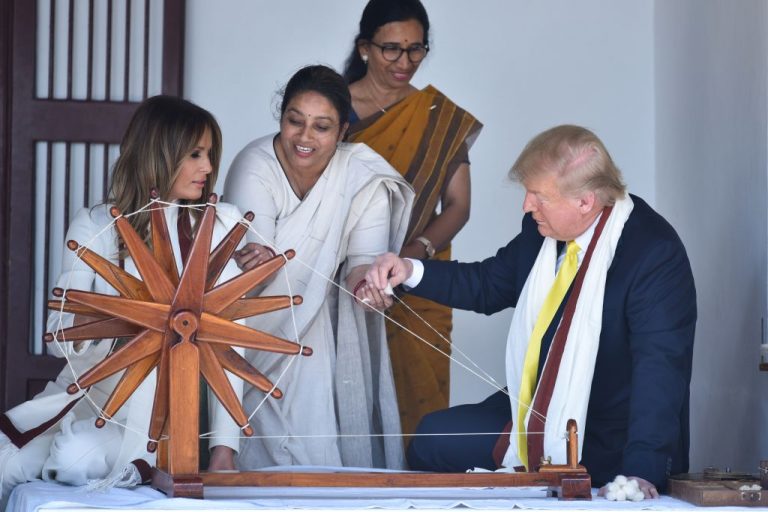“It’s fun to just come up with something so beautiful out of this pile of wool,” said Julie Iannelli, an experienced knitter in Calgary, after attending her first spinning class taught by instructor Caitlin Hamilton. “It’s such a rhythmic thing because you’re working with your feet, you’re working with your hands, your eyes are paying attention to it. It’s just such a good stress relief.”
Julie learned to knit from her mom at a very young age. It was “a hobby that I really enjoyed so much, and I never understood how the yarn was made.” When she saw that a spinning course was offered at Calgary’s STASH Lounge, she didn’t hesitate to sign up.
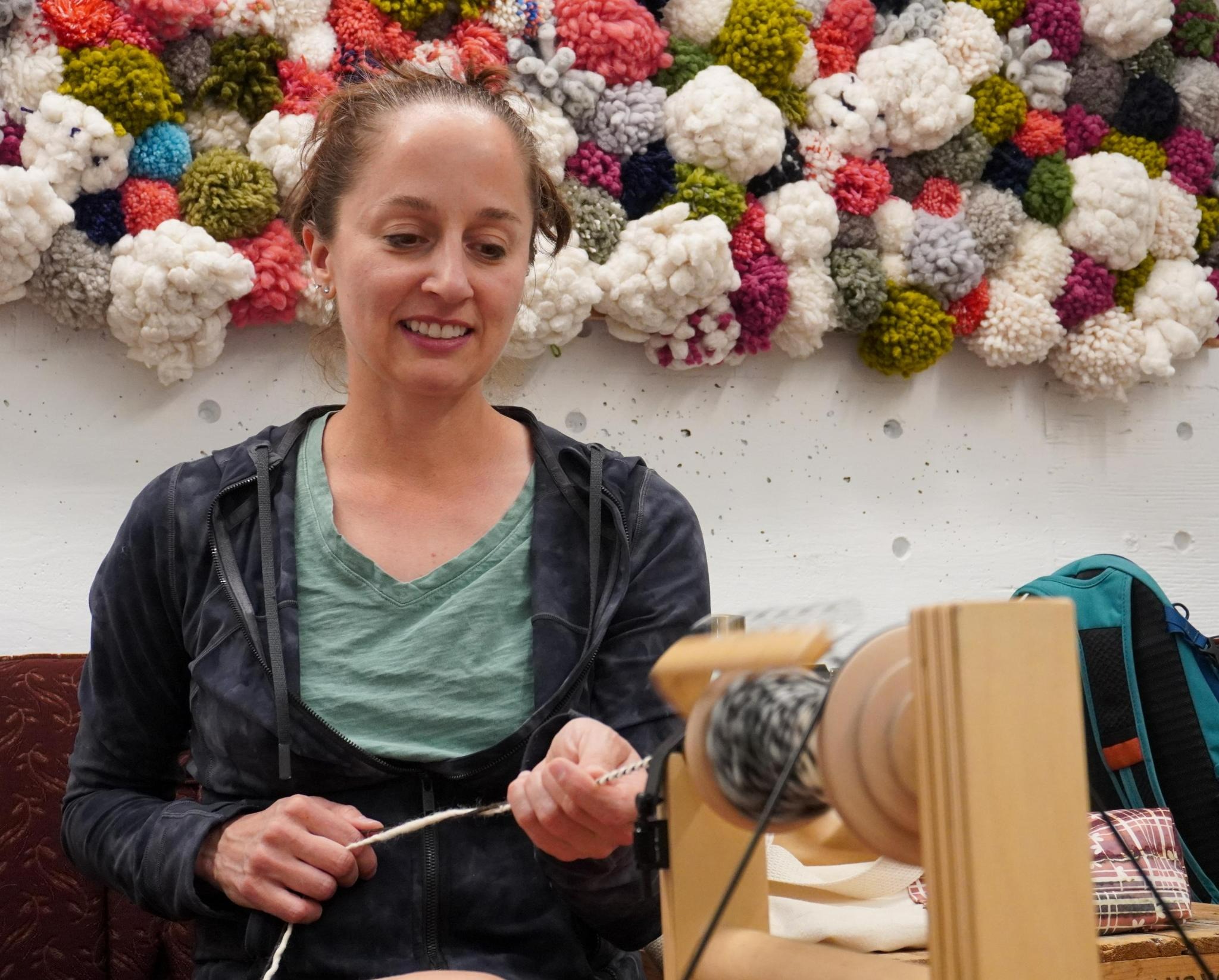
Over the course of three classes, Julie learned the ancient art of spinning. Considered one of the most important crafts in history, spinning continues to be practiced today — not out of necessity as was once the case, but for a sense of self-sufficiency, to make connections with past and present, or as a meditative pastime.
Evolution of the art of spinning
The oldest string of yarn dates back 41,000 to 52,000 years ago. Discovered at a prehistoric cave site in the south of France, the six-millimeter-long fragment was spun using fibers from the inner bark of a tree, and wrapped around a stone tool.
Before this discovery, fragments of a 19,000 year-old cord found at the Ohalo II archeological sight were thought to be the first evidence of spinning. These were found in the remains of a hut, finally exposed during low water levels in 1989 after being submerged in the Sea of Galilee for what researchers believe to be millennia.
Success
You are now signed up for our newsletter
Success
Check your email to complete sign up
The most primitive forms of hand spinning consisted of rubbing the fiber between the hands or against the thigh. After the incredible utility of spinning became apparent, the technique evolved to using a spindle, and later, the spinning wheel.
The spindle
The first tool created to facilitate spinning was the spindle, a straight stick that was rotated on its own axis to twist the fibers. The resulting yarn would then be wound onto the spindle until the whole spindle was wrapped in yarn. The spindle may have originated in the Middle East, where excavations have revealed specimens dating 5,000 BC.
The earliest spindles had an indentation or slit at the top to hold the yarn. Later, a hook was created to allow a better grip on the fiber.
Traditionally, spinning with a spindle often involved using a distaff, a short stick that held the raw fiber to be spun. Holding the distaff under the left arm – with the left hand free to draw out the fiber – and operating the spindle with the right hand, the spinning process required superb motor coordination.
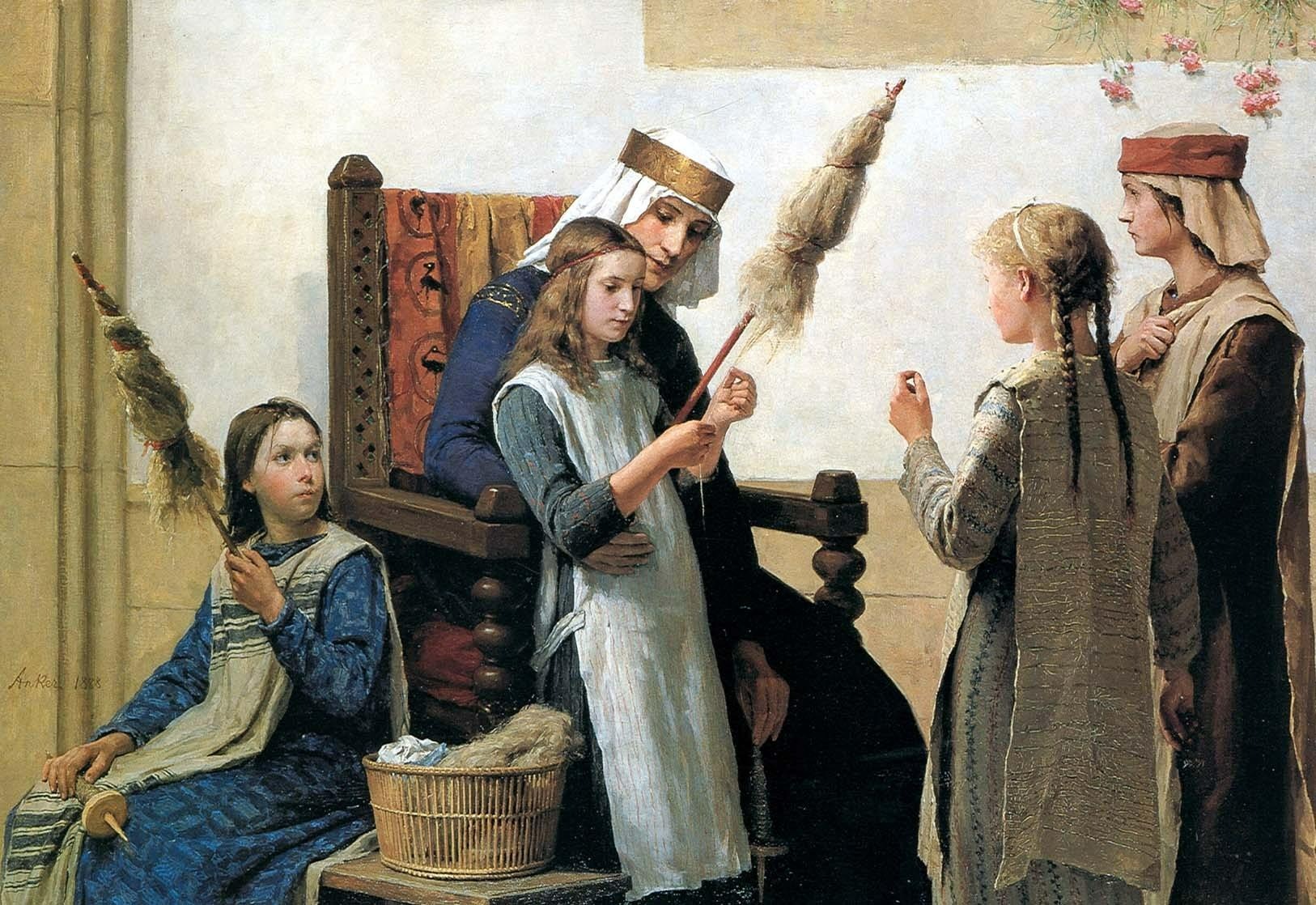
Later, it was discovered that the spindle could spin faster and longer if weight was added to it. Thus, a disk of wood, stone, clay or metal, called a spindle whorl, was added to the bottom of the spindle, which was then left suspended to rotate on its own. This is where the name “drop spindle” comes from, since the spindle is left to drop down as the yarn is produced.
Using this method, the spinner could not only draw longer fiber threads to be spun before it had to be wound into the spindle, but also go about her day while spinning yarn.
The spinning wheel
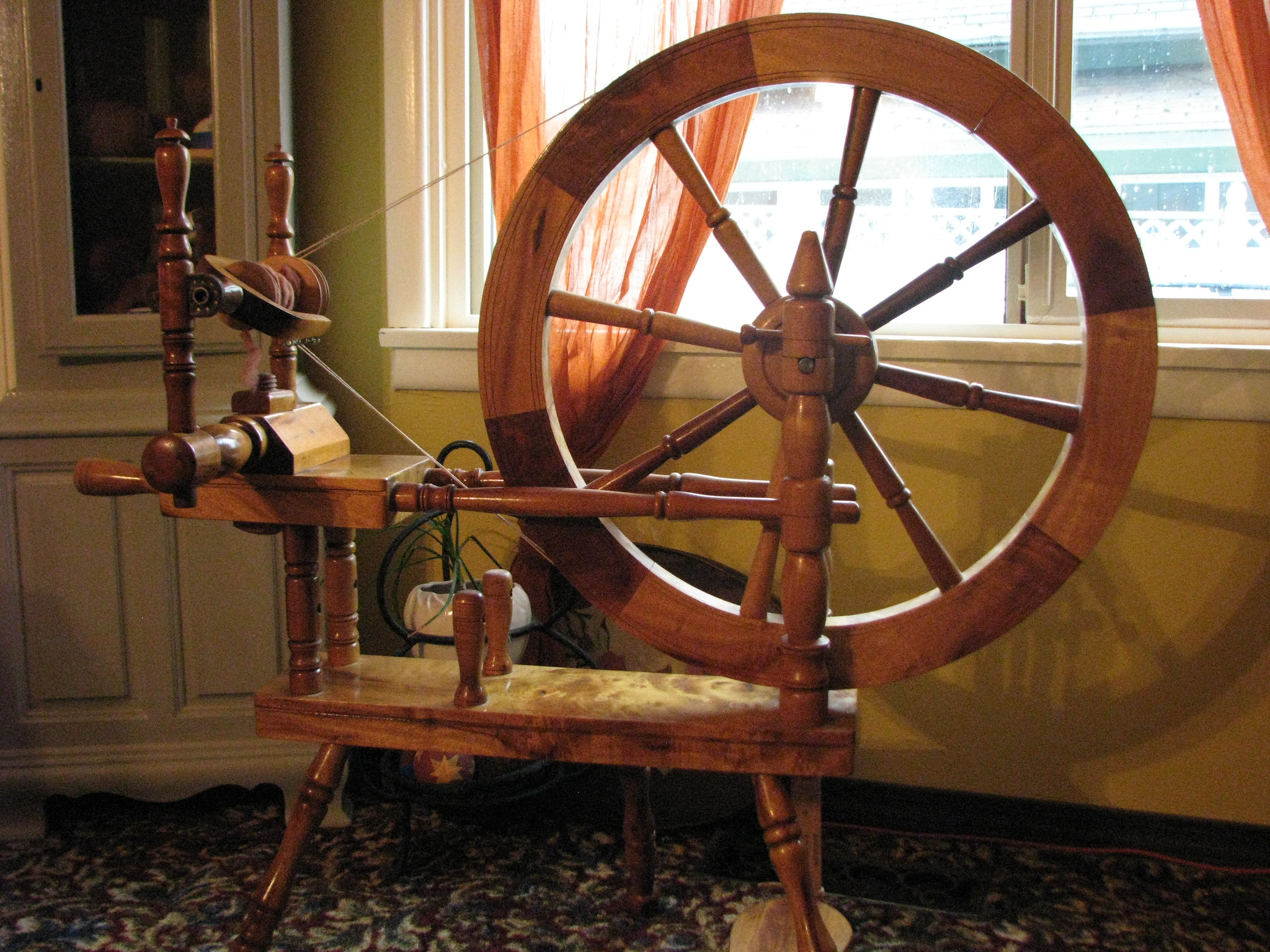
Spinning became even more efficient with the advent of the spinning wheel. While various sources trace its origin to different locations, including ancient Egypt, China and India, the spinning wheel could not have emerged any earlier than the invention of the wheel, between 3,500 and 5,500 BC.
In any case, by the second millennium the spinning wheel was in use around the world. In this new mechanism, the thread was still wound on a spindle, but the twisting process was automated through the use of a wheel. The spinner controlled the thickness of the thread with her fingers, and the amount of twist by changing the size of the wheel.
Spinning accessories
From the most rudimentary tools to advanced modern spinning wheels, the basic idea is the same: fibers are twisted into yarn, which can be twisted in one of two directions — known as the S-twist and Z-twist. Single yarns can be used directly, but plying — twisting two or more yarns together — creates a stronger yarn.
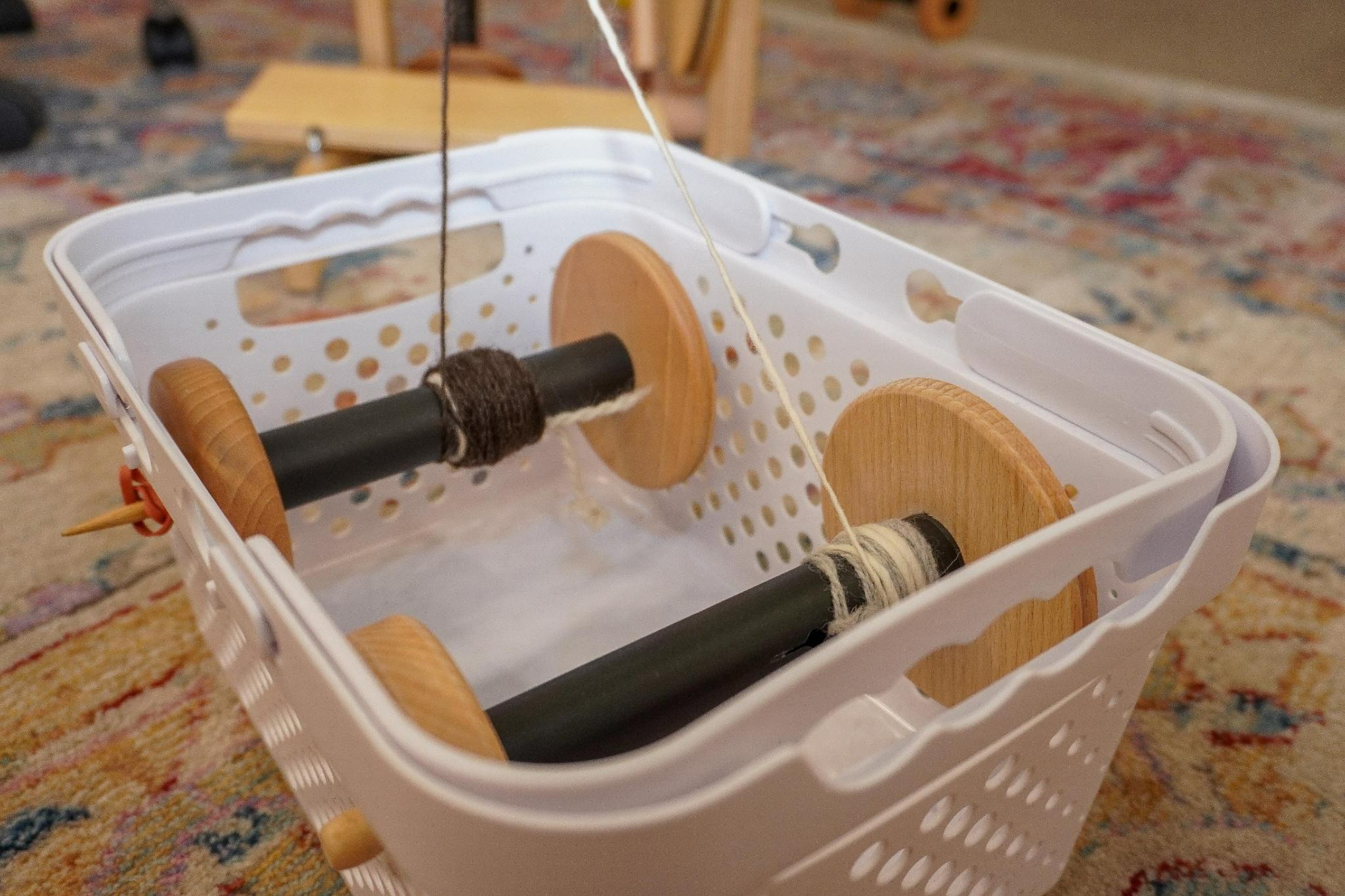
In plying, multiple threads of one twist are plied together by twisting in the opposite direction. This keeps the yarn from untwisting itself. To keep the yarns from tangling in the process, a lazy kate is used to hold the separate bobbins in place to feed the ply.
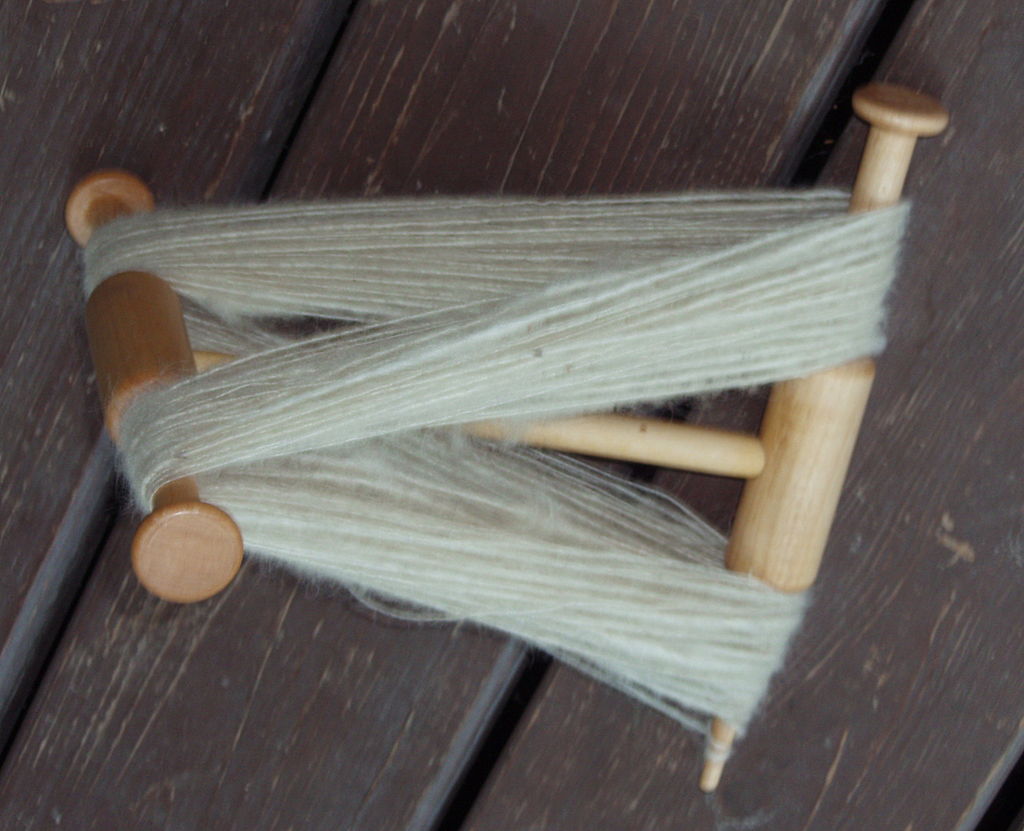
Finally, a niddy-noddy is used to remove the thread from the spinning wheel. A niddy-noddy is a piece of wood consisting of a central bar and two crossbars — perpendicular to each other — at the ends. By winding the yarn around it, a skein of yarn is formed, which can then be used, stored or wound into a ball.
A feminine craft
As the craft evolved, spinning became a daily activity for many women to make clothes for the family and earn extra income. Girls learned to spin at an early age, and some made it their occupation for life.
Over time, the term “spinster,” which originally denoted a woman who spun, became synonymous with an unmarried woman who was no longer of marriageable age. Hence the popular, yet incorrect notion that spinning was only for old ladies.
Women have traditionally been the ones to engage in this type of craftsmanship, perhaps due to their gentle nature and instinctive attention to detail. “There may be tendencies for women, [and spinning] was more of an art that they would take on,” said Julie, explaining why all of the attendees to the class were women. “Or maybe it was a bonding thing like you see in class, we are getting together.”
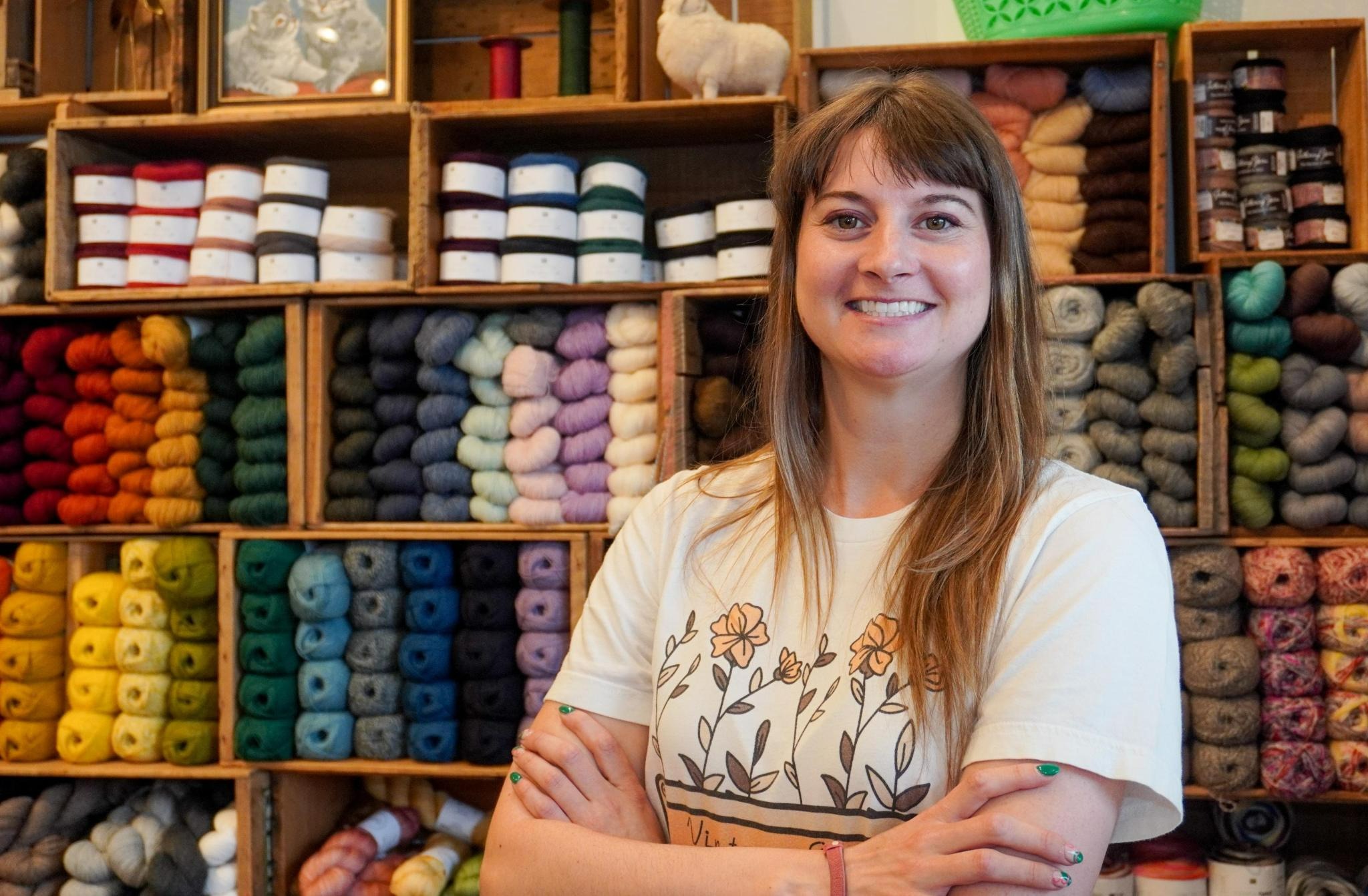
Caitlin Hamilton, a teacher who studied arts-based therapy for supporting children, passes on her knitting and spinning skills at evening classes offered by STASH Lounge. She suggested spinning suited a woman’s traditional role, “It is kind of a slow, meditative thing, so [women] could be doing other things at the same time, like watching kids or waiting for something to cook.”
Why spin today?
Caitlin suggests that spinning can facilitate bonding and build community, “That doesn’t happen now with technology….Like how we were in class. Everyone’s learning, they’re laughing because they made a mistake, but then it’s okay because someone next to them also made the same mistake. We can support each other through that.”
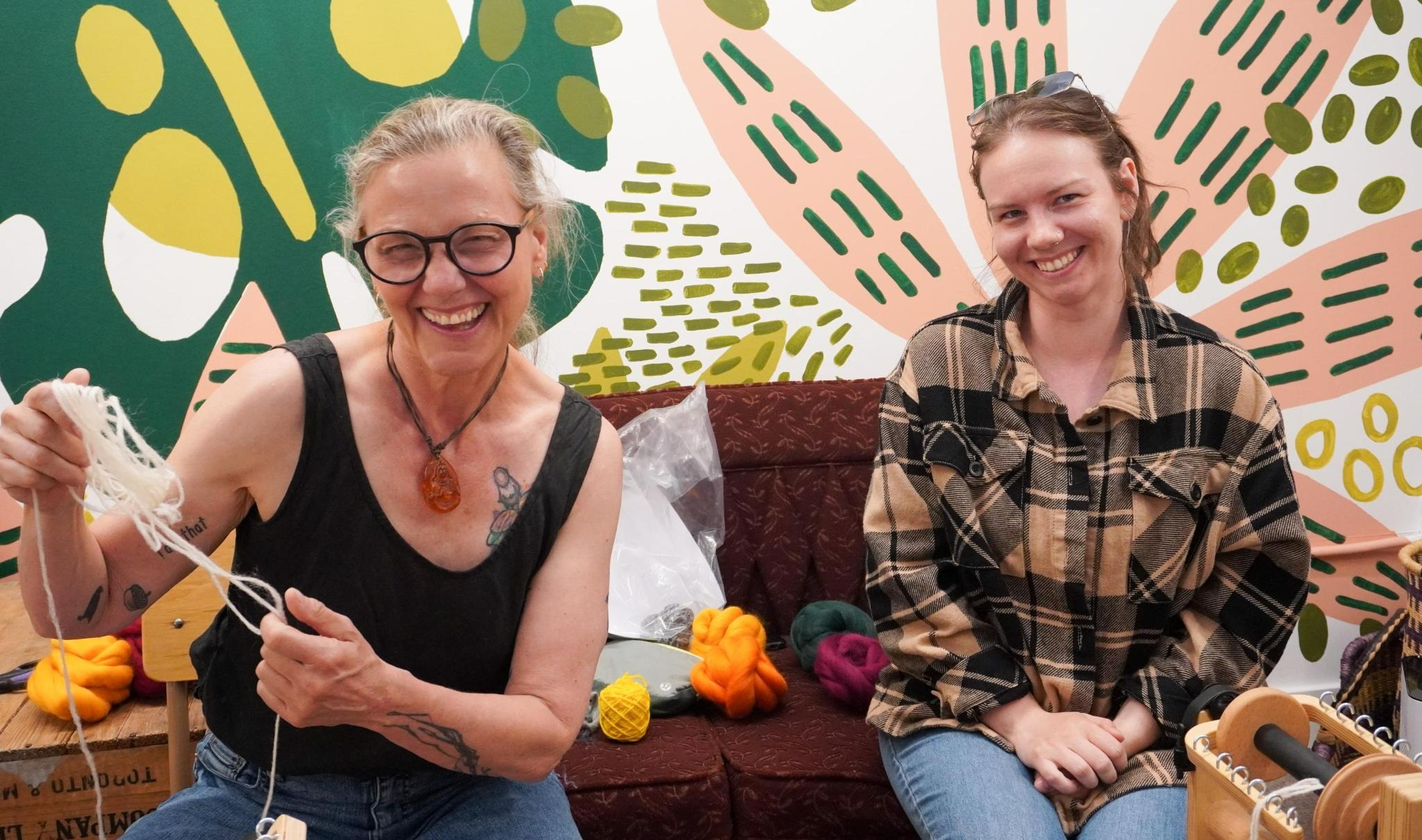
She also expressed how spinning creates healthy challenges for both mind and body. “I have to be mindful of what my hands are doing, what my feet are doing… Then also letting go of perfectionism, knowing it’s not going to be the same as a store bought or a machine made thing…It might not be the perfect thing you wanted, but now how do you work with what you have..?”
Julie found spinning to be an exercise in problem-solving. “When something goes wrong, you have to kind of pause, figure out what your plan is. You might have to ask for help.” At the same time, she said it was a “source of relaxation, it’s almost like a meditation… just realizing that you can relax and still do something, it’s really amazing.”



